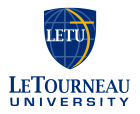Below is a summary of the abstract you submitted. Presenting author(s) is shown in bold.
If any changes need to be made, you can modify the abstract or change the authors.
You can also download a .docx version of this abstract.
If there are any problems, please email Dan at dar78@pitt.edu and he'll take care of them!
This abstract was last modified on June 7, 2018 at 3:43 p.m..

Life of a bacteriophage in the wild is treacherous at minimum. In order to persist in nature, a phage must encounter a potential host cell, successfully adsorb onto the cell, create an entry portal, and introduce its genome into the potential host cell. Each of these processes entails unique challenges. Bacteria in the environment are numerous and diverse. Successful introduction of the phage genome does not ensure phage survival and replication. There are many additional barriers such as restriction systems, CRISPR/CAS systems, and prophage induced immunity that impede the continuation of the phage life cycle.
Assuming evasion of the aforementioned defense systems, as phages search out their next host in nature, there is yet another significant factor that potentially limits their ‘fitness’ in the newly infected host cell, specifically host and phage codon biases.
Many Mycobacteriophage genomes encode tRNA genes. tRNA genes are most abundant in the phage genomes of clusters C, L, M, and V. Only about half the members of cluster A have at least one tRNA gene. However, there are at least 10 clusters in which no member encodes tRNA genes.
While tRNA genes are inherently short, accumulating and retaining these genes within the genome undoubtedly provides phage with some selective advantage. Two independent selective pressures potentially drive accumulation and retention of tRNA genes within phage genomes: the first being extreme codon bias within the phage genome and the second being extreme codon bias within potential or previous hosts. It is imperative that viruses adapt to the cellular conditions of as many potential hosts as possible for long term survival. Phage tRNA genes have been acquired from a variety of previous bacterial hosts, thus increasing their fitness for evolutionary survival and propagation of their genes.
In this study, tRNA genes in phage members of clusters A, G, K, L, M, N, and P isolated in Longview, TX are analyzed. The encoded tRNA anticodons are compared to the codon usage of the phage, the isolating host, Mycobacterium smegmatis mc2155, and a number of other potential environmental bacterial hosts identified through annotation analysis in Blast results. The phage examined include Bombshell (A4), Dublin (A5), Pmask (A6), Wunderphul (A6), Aroostook (G1), Gideon (G1), Peanam (K1), Tyson (L1), Reindeer (M1), Andies (N), Glaske (P1) and Willsammy (P1).
A number of extreme and moderate codon biases corresponding to phage encoded tRNA genes are reported. Considerations and implications relative to probable host codon usage will also be discussed.


